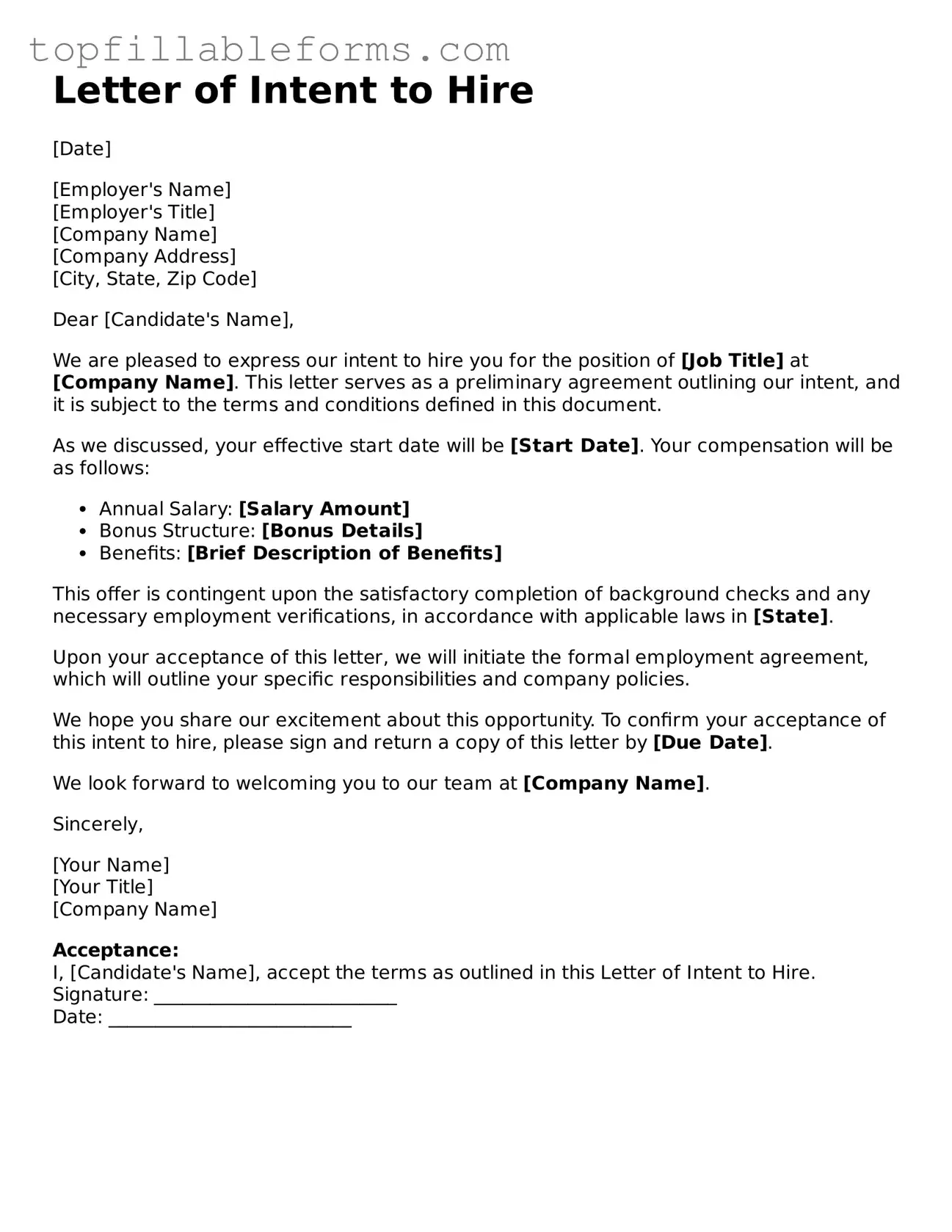Letter of Intent to Hire
[Date]
[Employer's Name]
[Employer's Title]
[Company Name]
[Company Address]
[City, State, Zip Code]
Dear [Candidate's Name],
We are pleased to express our intent to hire you for the position of [Job Title] at [Company Name]. This letter serves as a preliminary agreement outlining our intent, and it is subject to the terms and conditions defined in this document.
As we discussed, your effective start date will be [Start Date]. Your compensation will be as follows:
- Annual Salary: [Salary Amount]
- Bonus Structure: [Bonus Details]
- Benefits: [Brief Description of Benefits]
This offer is contingent upon the satisfactory completion of background checks and any necessary employment verifications, in accordance with applicable laws in [State].
Upon your acceptance of this letter, we will initiate the formal employment agreement, which will outline your specific responsibilities and company policies.
We hope you share our excitement about this opportunity. To confirm your acceptance of this intent to hire, please sign and return a copy of this letter by [Due Date].
We look forward to welcoming you to our team at [Company Name].
Sincerely,
[Your Name]
[Your Title]
[Company Name]
Acceptance:
I, [Candidate's Name], accept the terms as outlined in this Letter of Intent to Hire.
Signature: __________________________
Date: __________________________
